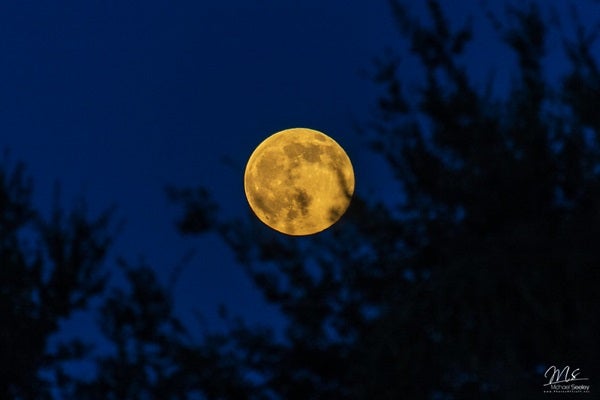
Venus’ surface may never have been temperate enough to host liquid water, new research suggests. Credit: NASA/JPL
The story of the early inner solar system goes something like this: Billions of years ago there were three rocky worlds with oceans of liquid water. Perhaps all three could have been set for life. But when Mars lost its atmosphere and Venus’ atmosphere experienced a runaway greenhouse effect, only Earth could ultimately support life.
But a trio of researchers at the University of Cambridge, UK, have a different view: All those billions of years ago, Venus was already too hot to support oceans. There was water vapor (we still see evidence of it today), but it never had a chance to condense in the oceans. Instead, Venus was a steam world, which could reach surface temperatures of up to 1,340 degrees Fahrenheit (727 degrees Celsius). By most standards, this means that the surface of Venus was already a hellish, inhospitable world – and it never got much better.
“Over billions of years, this atmospheric vapor would undergo photodissociation, breaking water molecules into hydrogen and oxygen, with the lighter hydrogen gradually escaping into space,” says Tereza Constantinou, a Cambridge doctoral student and first author of an article detailing the work published today. In Natural astronomy. “This process ultimately left Venus with the arid atmosphere we observe today.”
The team’s work offers a scenario for the early Solar System that could dramatically revise our understanding of Venus’ climate history and significantly alter the possibility that it was ever habitable. If Venus were, in fact, a steam-powered world, it would not be alone. Recent discoveries of exoplanets like GJ 9827 d show evidence of worlds shrouded in hot vapor.
Redefining the habitable zone
Astronomers often rely on two concepts to define the habitable zone of a star system. There’s the conservative habitable zone, defined as the region around a star where temperatures would be very similar to Earth’s. There is also the optimistic habitable zone, which takes into account the fact that Venus and Mars are both theorized to have been habitable worlds; this suggests that Venus is on what is called the inner edge of the habitable zone, and Mars on the outer edge.
RELATED: Why is Venus so different from Earth?
If Venus lies beyond the inner edge, that could revise our understanding of what types of planets might be habitable and dramatically narrow the search for life on other worlds.
“However, knowing that Venus has probably never been habitable, the Venus-like exoplanets that JWST is characterizing are unlikely candidates for habitable conditions,” says Constantinou. “This narrows the search for habitable and inhabited conditions on exoplanets, directing attention to Earth analogues.”
Missions to Venus
There are some missions, current or in preparation, that could answer many questions about Venus’ climate history and confirm this team’s findings. EnVision, a European mission due to launch in 2031, will investigate Venus from orbit. It will be equipped with various instruments that will examine how the atmosphere, surface and bowels of Venus interact. Among these are mass spectrometers, which will look for gases in the atmosphere that indicate the past (or, in trace, present) existence of water.
There’s also NASA’s DAVINCI mission, which has a similar timeline to EnVision. It collaborated with another NASA mission, VERITAS. DAVINCI will be equipped with an atmospheric probe, which will be able to learn more about Venus’ atmosphere as it descends and “talk to whether Venus has ever been wet or habitable,” Constantinou says.
Of course, there is still a small chance that there is life on Venus. You just have to look higher. Conditions in the upper atmosphere are more temperate and similar to those on Earth, and in certain scenarios could still have supported life, even if the surface of Venus was too far away.
In 2020, a team of researchers reported what they said was evidence of the presence of a gas called phosphine in Venus’ atmosphere. On Earth, phosphine is produced by life and not much else, so this would be a strong indication of some microbial life in Venus’ atmosphere or some non-biological process. But this claim remains controversial and contested. The team’s initial analysis was affected by data reduction errors at the observatory that collected the data, and many researchers believe the signal is more likely a different compound that absorbs light at the same wavelength as phosphine.
“Any potential life in the Venusian atmosphere would have originated and evolved under completely different conditions, perhaps adapted to survive in sulfuric acid clouds – so much of the life we don’t know yet,” says Constantinou.

